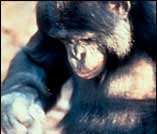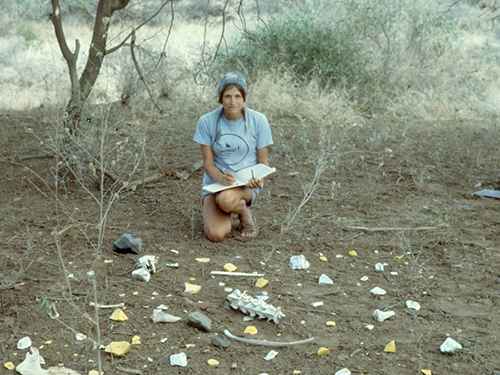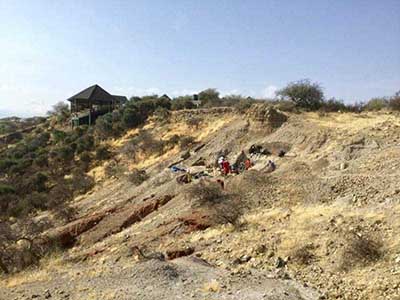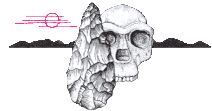Brain Imaging Studies
of Stone Toolmaking
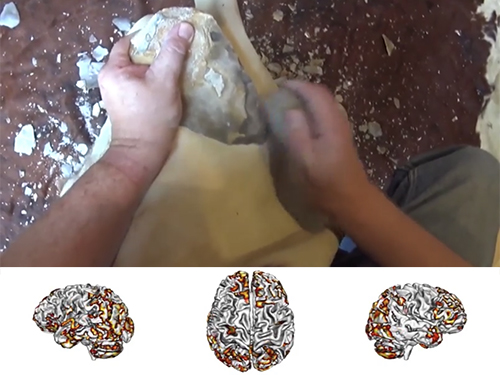
Above: fMRI images taken of Nick Toth's brain while he watches a video of himself making a stone tool. This study was performed in order to investigate the role of Broca's Area during stone toolmaking. This research may provide evidence that stone tool manufacturing shares an evolutionary connection with language.
What are the cognitive demands of making early stone tools? The manufacture and use of early stone tools represents a major evolutionary advance in the behavior of early hominids. Identifying any shifts in brain and cognitive function that may have been associated with this innovative behavior has long been priority in paleoanthropological research. Modern brain imaging techniques are now making it possible to address these questions directly.
The use of Positron Emission Tomography (PET) to examine patterns of brain activation during stone tool manufacture was pioneered in a pilot study of Oldowan tool-making by Stone Age Institute researchers Dietrich Stout, Nicholas Toth, and Kathy Schick, working with Julie Stout of the IU Psychology Department and Gary Hutchins of IU Radiology. This research was continued in a more systematic, multi-subject study by Dietrich Stout which revealed the unusual visual-spatial and motor demands of Oldowan tool-making and documented the changes in brain activation associated with skill acquisition. These results challenge accepted ideas about the psychological implications of the earliest stone tools and highlight those areas of the brain most likely to display evolutionary adaptations relevant to stone tool-making. More recently, Stout, Toth and Schick have completed a pilot study using PET to examine differences between Oldowan and later Acheulean stone tool-making, a project which will be expanded in the future.
In 2017, researchers Tom Schoenemann, Shelby Putt, Lana Ruck, Zara Anwarzai, and Chung-Lin Yang began using fMRI technology to research the evolutionary connection between stone toolmaking and language, a connection that has long been hypothesized by scientists. In order to further reveal aspects of this connection, the researchers conducted fMRI brain imaging while an expert stone toolmaker watched a video of himself making a stone tool. The preliminary results of the pilot study have revealed evidence for correlation of bilateral activation in Broca’s area during action perception of Acheulian stone tool technology. Broca's area is a region in the frontal lobe of the brain which has been linked to language processing and speech production since it was discovered and published by Paul Broca in 1865. This research is ongoing and will further our understanding of the evolution of human cognition. To learn more about this research, watch the informative video of fMRI brain activity of the flintknapper watching himself create an Acheulian handaxe, or visit Tom Schoenemann's Human Brain Evolution Lab website.


